04 September 2023: Database Analysis
Visualization Analysis of Research Trends and Hotspots in Inspiratory Muscle Training
Zhao-Di WangDOI: 10.12659/MSM.941486
Med Sci Monit 2023; 29:e941486
Abstract
BACKGROUND: Inspiratory muscle training (IMT) aims to train inspiratory muscles based mainly on the diaphragm by applying a load resistance during the inspiratory process. Many papers related to IMT have been published in various journals; however, no articles objectively and directly present the development trends and research hotspots of IMT. Therefore, this study used CiteSpace to visually analyze recent IMT-related publications to provide valuable information for future IMT-related studies.
MATERIAL AND METHODS: CiteSpace was applied to analyze the IMT-related publications by countries, institutions, journals, authors, references, and keywords.
RESULTS: We included 504 papers. The number of IMT-related publications trended upward between 2009 and 2022. Leuven had the highest number of publications by an institution. The American Journal of Respiratory and Critical Care Medicine was the most frequently co-cited journal. Half of the top 10 references cited were from Journal Citation Reports (JCR) Q1 and half were about the application of IMT in chronic obstructive pulmonary disorder. Gosselink was the author with the highest number of publications and Aldrich was the author with the highest co-citation frequency. The preponderance of studies on the surgical population and postoperative pulmonary complications reflects potential application of IMT in enhanced recovery after surgery.
CONCLUSIONS: This study provides scholars with important information related to IMT research. It analyzes IMT research trends and status, which can help researchers identify primary topics in the field and find ways to explore new research directions to promote the application of IMT in clinical practice and the cooperation of IMT-related disciplines.
Keywords: Bibliometrics, Data Visualization, Enhanced Recovery After Surgery, Rehabilitation, Humans, Diaphragm, Health Facilities, Physical Therapy Modalities, Postoperative Complications, Postoperative Period
Background
Inspiratory muscle training (IMT) has been studied for more than 40 years. In 1976, Leith and Bradley demonstrated that proper IMT can improve respiratory muscle strength and endurance in young people [1]. The goal of IMT is to train the inspiratory muscles based mainly on the diaphragm by applying a load resistance during the inspiratory process [2,3]. On the one hand, IMT strengthens airway clearance and defense and reduces retained secretions and collapsed airways by increasing inspiratory muscle strength and endurance, in turn reducing the occurrence of pulmonary complications and improving cardiopulmonary function [4–6]. On the other hand, IMT prevents and slows atrophy and functional decline of inspiratory muscles and avoids the blood-flow competition between respiratory and locomotor muscles during exercise by increasing the number of mitochondria and type II muscle fibers in the inspiratory muscles [7,8]. IMT also reduces activation of sympathetic nerves, improves perfusion of skeletal muscles, and increases motor function, thus promoting functional recovery of patients [9,10].
Safe, flexible, and accessible IMT is currently recommended for individual patient rehabilitation programs and is applied to relevant populations either alone or in combination with other rehabilitation modalities [11,12]. In the elderly, IMT can improve maximal inspiratory pressure (MIP) and vagal-mediated heart rate variability (HRV) [13]. Athletes can increase exercise endurance and improve training performance through IMT [14]. Clinically, IMT is mainly applied in intensive care patients, chronic obstructive pulmonary disease (COPD), stroke, heart failure (HF), spinal cord injury, and in patients who had thoracic and/or abdominal surgery [15–21]. Researchers have thus mostly focused on the rehabilitative effects, mechanism, and research overview of IMT in the above populations. They have also published relevant articles in academic journals, such as clinical trials, reviews, and meta-analyses. There is a lack of integration and systematic evaluation of these articles. IMT has recently received increased attention as an important component in respiratory rehabilitation/pulmonary rehabilitation [22,23]. Therefore, it is necessary to publish an article that comprehensively analyzes relevant articles of IMT and reflects the IMT development trends and research hotspots, which can provide scholars with important information about IMT.
Bibliometric analysis is a quantitative statistical method that uses computer image processing techniques to convert abstract data into intuitive graphics. This allows deep exploration of literature characteristics from the level of big data and can reveal the development trends and research hotspots of a certain discipline or field [24]. Recently, some researchers have used CiteSpace for bibliometric analysis. Based on analyses of collaborative networks, co-citation, and co-occurrence, CiteSpace presents the relationships among countries, institutions, journals, authors, references, and keywords through visual maps [25,26]. Scholars have performed bibliometric analysis of cardiac rehabilitation (CR) [27] and high-intensity interval training (HIIT) [28] using CiteSpace, but there are no bibliometric analyses of IMT.
Based on the Web of Science Core Collection (WoSCC) database, this study used CiteSpace software to conduct a bibliometric analysis of the literature related to IMT research between 2009 and 2022. This study provides important information for researchers related to IMT research on countries, institutions, journals, references, authors, and keywords. The information can help researchers understand hot topics in the field and explore new research directions to promote use of IMT in clinical practice, as well as cooperation and development of IMT-related disciplines.
Material and Methods
DATA SOURCE AND SEARCH STRATEGY:
The publications used in this study were retrieved from the WoSCC database, the most comprehensive database of scientific publications on global academic resources [29]. Due to daily database updates, to avoid bias the literature retrieval from WoSCC was only performed on April 3, 2023. The search terms were as follows: Topic Search=(“inspiratory muscle training”) and Time Span=2009–2022. A total of 822 publications were identified.
INCLUSION AND EXCLUSION CRITERIA:
Inclusion criteria were: (1) language of setting: English; and (2) type of paper: articles and review articles. Exclusion criteria were: (1) duplicate publications; (2) meeting abstract, letter, editorial material, correction, or book chapters; (3) literature with incomplete information; and (4) research content unrelated to IMT. A total of 558 publications were obtained using these criteria and the retrieved publications were imported into EndNote20 document management software. Two researchers read the titles and abstracts independently, excluded irrelevant publications, and cross-checked them. A third researcher assisted in the judgment when the other 2 researchers disagreed on a source. Ultimately, 504 publications (396 articles and 108 reviews) met the inclusion criteria (Figure 1), which were selected as “full record and cited references”, exported in “plain text file format”, and renamed as “download_.txt” to ensure that the CiteSpace software could correctly read these records [25].
DATA ANALYSIS:
Knowledge mapping visualization analysis was performed using CiteSpace (6.2.R2), a Java-based application developed to analyze research trends, frontiers, and hotspots in an academic field and to demonstrate the structure and distribution of scientific knowledge [30,31]. In this study, CiteSpace software was used to perform collaborative network analysis (countries/institutions/authors), co-occurrence analysis (keywords), and co-citation analysis (journals/references/authors). Results were presented as visual graphs or tables.
Nodes in the plots generated by CiteSpace represent the analyzed objects; the size of a node is positively correlated with the frequency of the object’s occurrence [30]. The internal color of a node indicates the year of the object’s occurrence and a change in color represents a change in the duration of the study [30]. Lines between 2 nodes represent the co-occurrence or co-citation relationship and the thickness of a line represents the strength of the relationship [26]. Betweenness centrality (BC) is a measure of the importance of a node in the network; a node with BC ≥0.1 is displayed with a purple ring [32]. When performing cluster analysis, Modularity value should be >0.3, otherwise the cluster is meaningless; if the Mean Silhouette (the contour value), which indicates the homogeneity of the clustering profile, is closer to 1, it means the clustering is more efficient [25]. Burst analysis represents the frequency of a node suddenly increasing compared with other nodes at a certain time in the chosen field, indicating that this node is active at a certain time, which can help determine research trends, frontiers, and hotspots [33].
Parameters of CiteSpace were set as follows: Time Slicing (2009–2022); Year per Slice (1); Term Source (Title/Abstract/Author keywords/Keywords Plus); Node Type (Author/Institution/Country/Keyword/Reference/Cited Author/Cited Journal); Top N (50); Pruning (Pathfinder/Pruning sliced networks); and Visualization (Cluster View-Static/Show Merged Network).
Results
ANNUAL QUANTITATIVE DISTRIBUTION OF PUBLICATIONS:
The annual number of publications reveals the rate of development of knowledge and research trends in the chosen field. As shown in Figure 2, the number of publications related to IMT fluctuated between 2009 and 2022, but generally showed an upward trend. Significant declines were observed from 2016 to 2017 and from 2020 to 2021, while rapid increases were observed from 2017 to 2018 and from 2019 to 2020.
COUNTRIES:
Researchers from 48 countries published articles related to IMT. The top 5 countries were Brazil (118), England (66), USA (50), China (48), and Spain (41) (Table 1). It is notable that the total number of publications from Brazil was much larger, but England had the highest centrality (BC=0.43), far exceeding that of Brazil (BC=0.05). Australia, Canada, Belgium, and Egypt were not in the top 5 for the number of publications, but they ranked high for BC value (Figure 3).
INSTITUTIONS:
A total of 295 institutions contributed IMT studies. As shown in Table 2, KU Leuven had the most publications (19). Half of the top 10 institutions were from Brazil. In terms of centrality, KU Leuven (BC=0.16) ranked first, while University Hospital Leuven (BC=0.15) and Brunel University (BC=0.13) ranked second and third, respectively (Figure 4).
JOURNALS:
As shown in Table 3, the American Journal of Respiratory and Critical Care Medicine was co-cited most frequently (336) among the top 10 journals. Most of the journals were from the United States and England, and the top 2 journals had impact factors over 30 points. Moreover, 90% of the top 10 journals were JCR Q1 or Q2 (impact factors and partitions from Journal Citation Reports – Clarivate). However, the BC values of the top 10 journals were all less than 0.1.
REFERENCES:
Reference co-citation analysis is usually used to explore research frontiers and priorities of the chosen academic field. The CiteSpace software g-index parameter k was set to 20. As shown in Table 4, half of the top 10 articles were from JCR Q1 and the top-ranked article had an impact factor of 33.801 points. The top 10 most frequently co-cited publications were clinical trials (5) or meta-analyses (5) and half of them studied the application of IMT in COPD patients.
COLLABORATIVE NETWORK ANALYSIS: A total of 393 scholars have been involved in IMT-related research. As shown in Table 5, the top 3 authors ranked by number of publications were Gosselink (9), McConnell (7), and Brown (6) and Dallago (6). The top 9 authors were from Europe (7), Oceania (1), and South America (1). In terms of centrality, all of these authors had scores less than 0.1.
CO-CITATION ANALYSIS: When 2 authors’ articles are simultaneously cited by a third author’s article, it identifies a co-citation relationship between these 2 authors [34]. Table 6 shows the top 8 authors in terms of co-citation frequency, with the first ranked Aldrich being cited 147 times. Notably, Gosselink and McConnell were ranked in the top 5 in both the co-citation analysis and the collaborative network analysis. In terms of centrality, Hill (BC=0.14) and Dallago (BC=0.10) were relatively ahead (Figure 5).
KEYWORD CO-OCCURRENCE ANALYSIS: A total of 343 keywords appeared in the articles. As shown in Table 7, the highest frequencies of co-occurrence of “inspiratory muscle training” (152) and “exercise” (122) were found more than 100 times. The centrality of key nodes was generally considered to be ≥0.1, thus the key nodes in this study included “inspiratory muscle training”, “respiratory muscles”, “breathing exercises”, and “performance” (Figure 6).
KEYWORD CLUSTERING ANALYSIS: To further determine relationships among keywords, we used the log-likelihood rate (LLR) algorithm model to perform a cluster analysis. Timeline graphs were drawn as in Figure 7 and clustering data were derived as in Table 8. IMT research areas in the study were divided into 9 clusters. The top 3 clusters were “postoperative pulmonary complications”, “exercise capacity”, and “running performance”.
KEYWORD BURST ANALYSIS: The keyword burst analysis indicates that keywords appear suddenly with higher frequencies at a certain period in this domain, and red areas indicate the length of time that a keyword has lasted since its sudden appearance [33]. The burst analysis yielded 25 keywords (Figure 8). Keywords with higher burst values were “time trial performance” (3.9), “healthy” (3.7), “weakness” (3.24), and “exercise performance” (3.19). “Diaphragm” had a maximum duration of 9 years. By the end of 2022, keywords that were still in sudden outbreak were “guidelines”, “lung function”, “surgery”, and “diagnosis”.
Discussion
STRENGTHS AND LIMITATIONS:
This study is the first bibliometric analysis of publications on IMT over the last 14 years that we are aware of. However, this study has some limitations due to the CiteSpace software. First, this study only analyzed literature related to IMT obtained from the Web of Science database between 2009 and 2022, so the inclusion of literature may not be comprehensive. Second, this study limited the language to English, and thus may have missed relevant publications in other languages. However, the WoSCC database is the most comprehensive database of scientific publications on global academic resources, “articles or reviews” are the main types of publications, and “English” is the most common language for publishing academic literatures in the worldwide. Thus, our study may address the bias caused by the above deviations.
Conclusions
This study used CiteSpace software to analyze IMT research trends and status by performing collaborative network, co-occurrence, and co-citation analyses on 504 IMT-related articles published between 2009 and 2022. The popularity of IMT research has continued to rise. COPD, inspiratory muscle, and effectiveness, have been, and continue to be, primary research topics in IMT. Currently, IMT is receiving attention in terms of the diagnosis and treatment of some diseases, lung function, surgical population, and guidelines. Researchers can further explore the optimal amount of IMT intervention, the timing of application, and the specific population effect in future studies. In addition, clinicians need to focus on the problem of IMW and make timely diagnoses so as to perform targeted IMT. In the future, IMT researchers can actively carry out multicenter and large-sample size studies to provide more high-quality, evidence-based medical findings for the field of IMT.
Figures
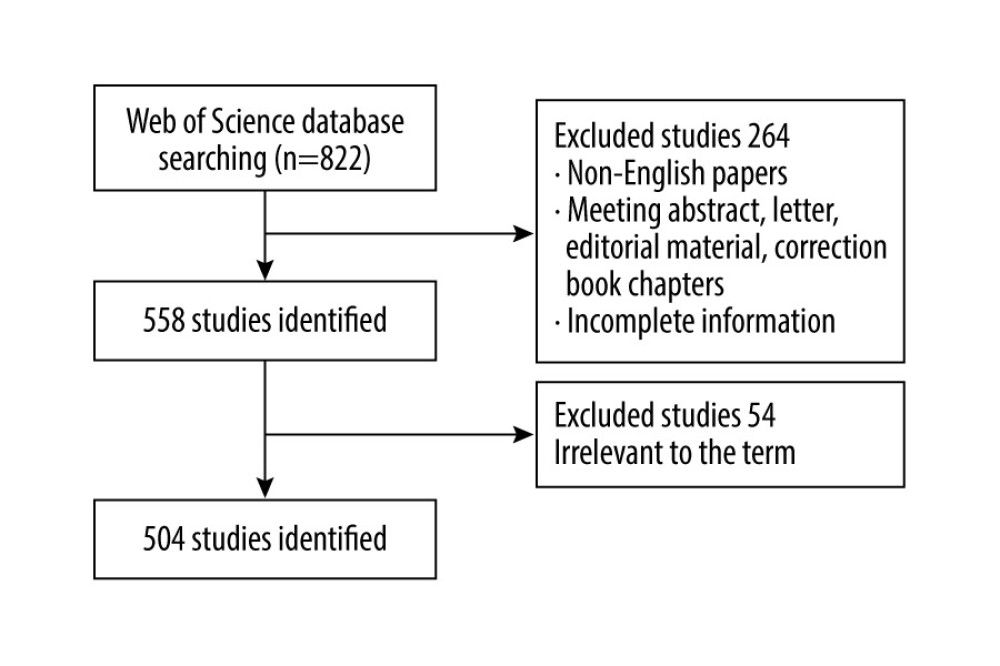 Figure 1. Database search flow chart. (Software: WPS Office 2023, Kingsoft, China).
Figure 1. Database search flow chart. (Software: WPS Office 2023, Kingsoft, China). 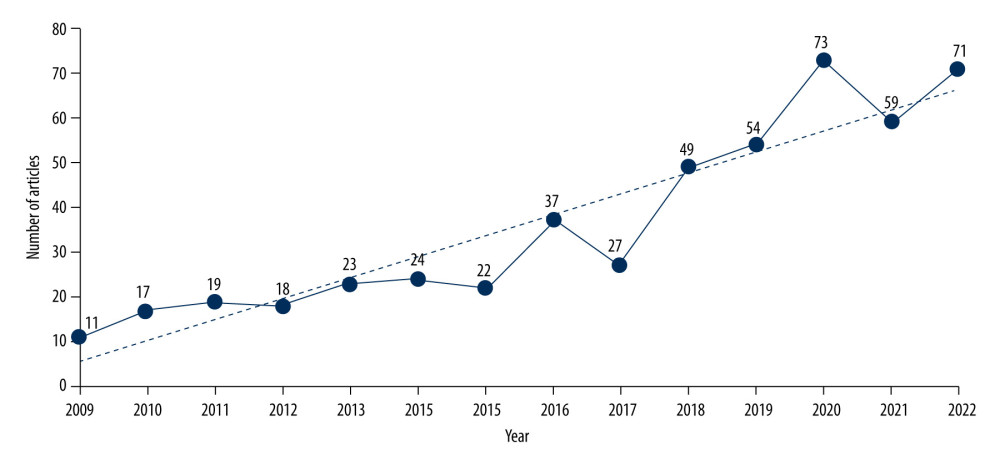 Figure 2. Annual number of publications about IMT. Microsoft Excel 2019 software was used for graphing the annual circulation of publications. (Software: Microsoft Excel 2019, Microsoft, USA).
Figure 2. Annual number of publications about IMT. Microsoft Excel 2019 software was used for graphing the annual circulation of publications. (Software: Microsoft Excel 2019, Microsoft, USA).  Figure 3. Country collaborative network analysis. Time slicing: January 2009 to September 2022, Slice length: 1 year, Node types: Country, Top N=50, Pruning: Pathfinder and Pruning the merged network, N=48, E=99. Above the picture is the timeline with color (2009–2022). The size of a node is positively correlated with the number of the publications. A node with BC ≥0.1 is displayed with a purple ring. Connecting lines represent collaborative relationships. (Software: CiteSpace 6.2.R2, Drexel University, Philadelphia, USA).
Figure 3. Country collaborative network analysis. Time slicing: January 2009 to September 2022, Slice length: 1 year, Node types: Country, Top N=50, Pruning: Pathfinder and Pruning the merged network, N=48, E=99. Above the picture is the timeline with color (2009–2022). The size of a node is positively correlated with the number of the publications. A node with BC ≥0.1 is displayed with a purple ring. Connecting lines represent collaborative relationships. (Software: CiteSpace 6.2.R2, Drexel University, Philadelphia, USA). 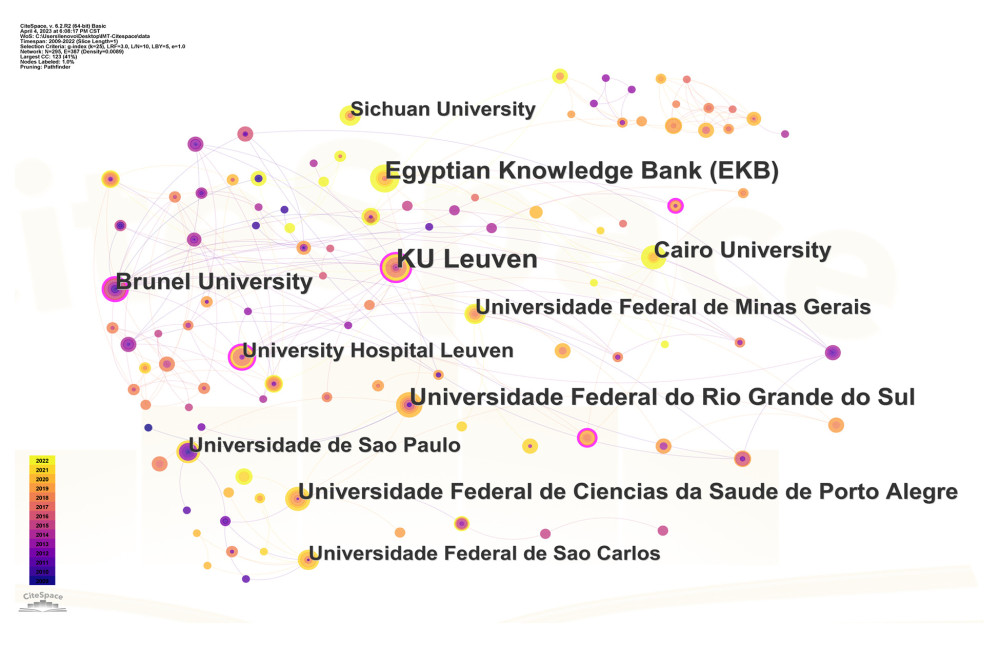 Figure 4. Institution collaborative network analysis. Time slicing: January 2009 to September 2022, Slice length: 1 year, Node types: Institution, Top N=50, Pruning: Pathfinder and Pruning the merged network, N=295, E=387. Above the picture is the timeline with color (2009–2022). The circles in the picture indicate the volume of articles issued, with larger circles indicating more articles issued by the institution, and the connecting lines indicating the existence of a collaborative or co-occurring relationship. A node with BC ≥0.1 is displayed with a purple ring. (Software: CiteSpace 6.2.R2, Drexel University, Philadelphia, USA).
Figure 4. Institution collaborative network analysis. Time slicing: January 2009 to September 2022, Slice length: 1 year, Node types: Institution, Top N=50, Pruning: Pathfinder and Pruning the merged network, N=295, E=387. Above the picture is the timeline with color (2009–2022). The circles in the picture indicate the volume of articles issued, with larger circles indicating more articles issued by the institution, and the connecting lines indicating the existence of a collaborative or co-occurring relationship. A node with BC ≥0.1 is displayed with a purple ring. (Software: CiteSpace 6.2.R2, Drexel University, Philadelphia, USA). 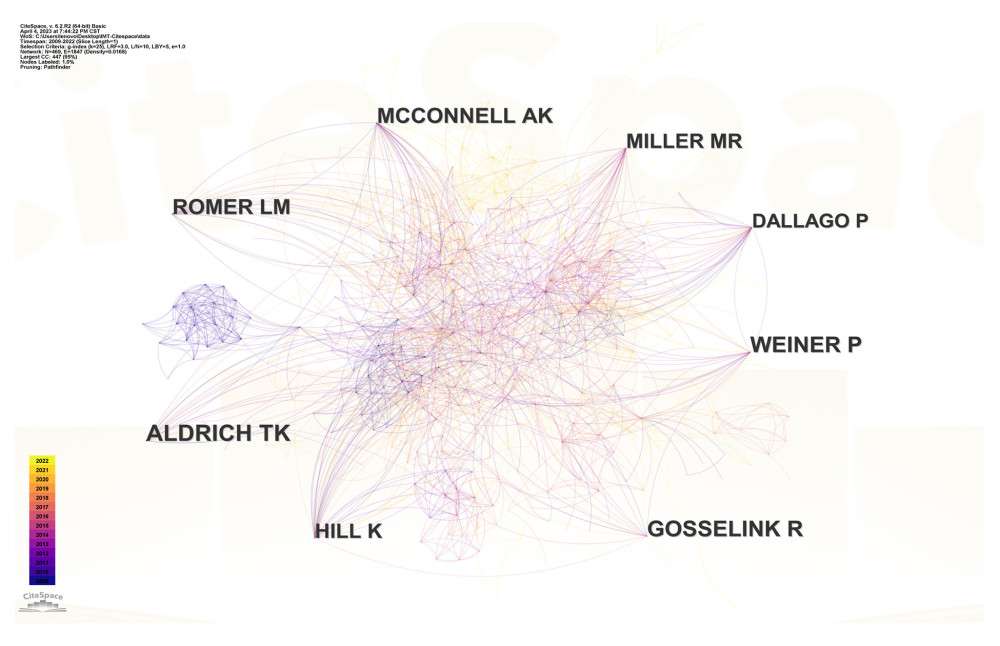 Figure 5. Author co-cited analysis. Lines between 2 nodes represent the co-citation relationship of authors, and the thickness of a line represents the strength of the relationship. (Software: CiteSpace 6.2.R2, Drexel University, Philadelphia, USA).
Figure 5. Author co-cited analysis. Lines between 2 nodes represent the co-citation relationship of authors, and the thickness of a line represents the strength of the relationship. (Software: CiteSpace 6.2.R2, Drexel University, Philadelphia, USA). 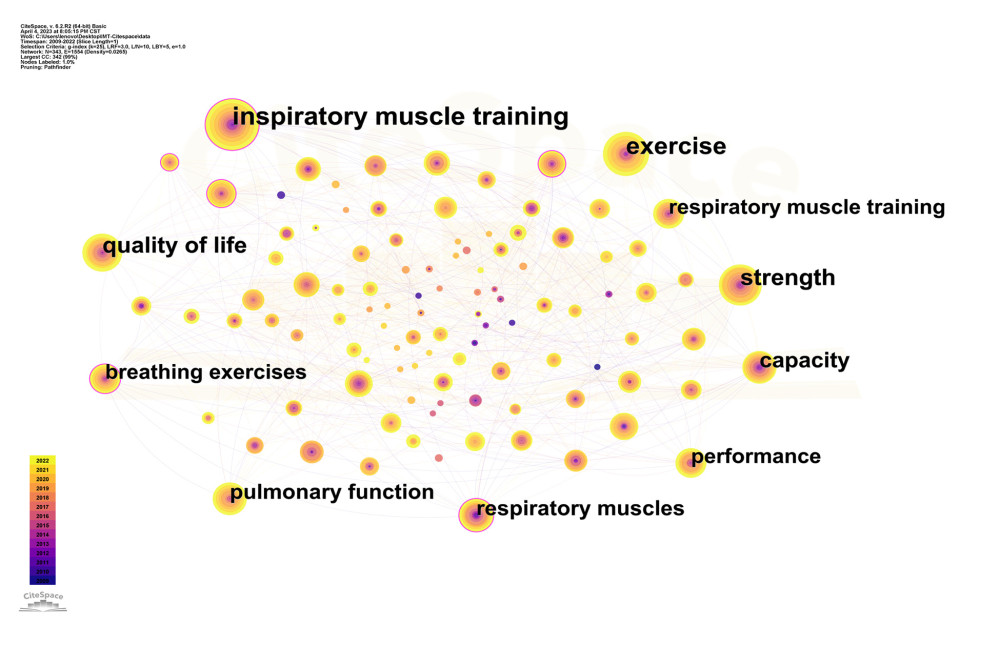 Figure 6. Keyword co-occurrence knowledge map. Institution collaborative network analysis. Time slicing: January 2009 to September 2022, Slice length: 1 year, Node types: Institution, Top N=50, Pruning: Pathfinder and Pruning the merged network, N=343, E=1154. Above the picture is the timeline with color (2009–2022). Lines between two nodes represent the co-occurrence relationship of keywords, and the thickness of a line represents the strength of the relationship. A node with BC ≥0.1 is displayed with a purple ring. (Software: CiteSpace 6.2.R2, Drexel University, Philadelphia, USA).
Figure 6. Keyword co-occurrence knowledge map. Institution collaborative network analysis. Time slicing: January 2009 to September 2022, Slice length: 1 year, Node types: Institution, Top N=50, Pruning: Pathfinder and Pruning the merged network, N=343, E=1154. Above the picture is the timeline with color (2009–2022). Lines between two nodes represent the co-occurrence relationship of keywords, and the thickness of a line represents the strength of the relationship. A node with BC ≥0.1 is displayed with a purple ring. (Software: CiteSpace 6.2.R2, Drexel University, Philadelphia, USA).  Figure 7. Keyword clustering and visual time-zone mapping. Dark to light colors represent years from far to near, and connecting lines represent links between keywords. When performing cluster analysis, Modularity value should be >0.3, otherwise the cluster is meaningless; if the Mean Silhouette (the contour value), which indicates the homogeneity of the clustering profile, is closer to 1, it means the clustering is more efficient. (Software: CiteSpace 6.2.R2, Drexel University, Philadelphia, USA).
Figure 7. Keyword clustering and visual time-zone mapping. Dark to light colors represent years from far to near, and connecting lines represent links between keywords. When performing cluster analysis, Modularity value should be >0.3, otherwise the cluster is meaningless; if the Mean Silhouette (the contour value), which indicates the homogeneity of the clustering profile, is closer to 1, it means the clustering is more efficient. (Software: CiteSpace 6.2.R2, Drexel University, Philadelphia, USA). 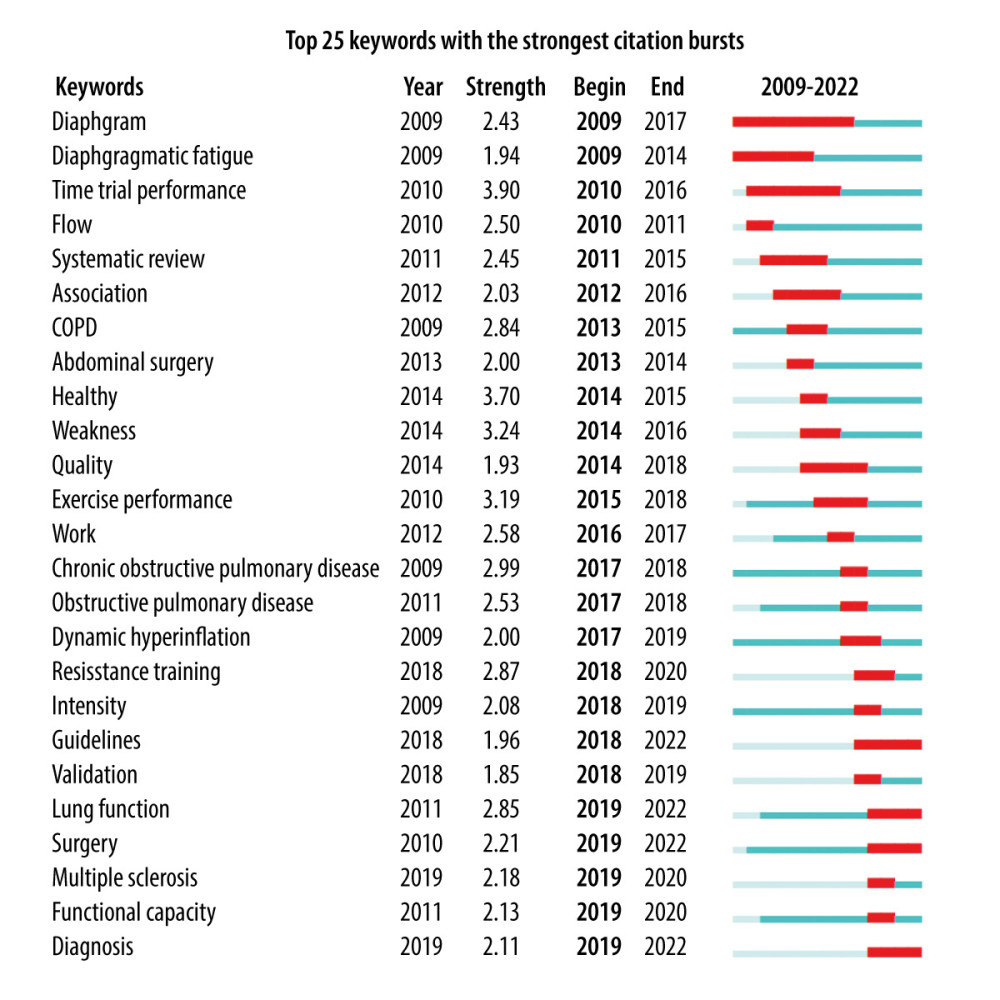 Figure 8. Top 25 keyword bursts. The keyword burst analysis indicates that keywords appear suddenly with higher frequencies at a certain period in this domain, and red areas indicate the length of time that a keyword has lasted since its sudden appearance. (Software: CiteSpace 6.2.R2, Drexel University, Philadelphia, USA).
Figure 8. Top 25 keyword bursts. The keyword burst analysis indicates that keywords appear suddenly with higher frequencies at a certain period in this domain, and red areas indicate the length of time that a keyword has lasted since its sudden appearance. (Software: CiteSpace 6.2.R2, Drexel University, Philadelphia, USA). Tables
Table 1. Top 10 countries by publications. The ranking was based on the number of publications. The data were derived from analysis using CiteSpace 6.2.R2, of the 504 publications retrieved on April 3, 2023. Table 2. Top 10 institutions by publications. The ranking was based on the number of publications. The data were derived from analysis using CiteSpace 6.2.R2, of the 504 publications retrieved on April 3, 2023.
Table 2. Top 10 institutions by publications. The ranking was based on the number of publications. The data were derived from analysis using CiteSpace 6.2.R2, of the 504 publications retrieved on April 3, 2023.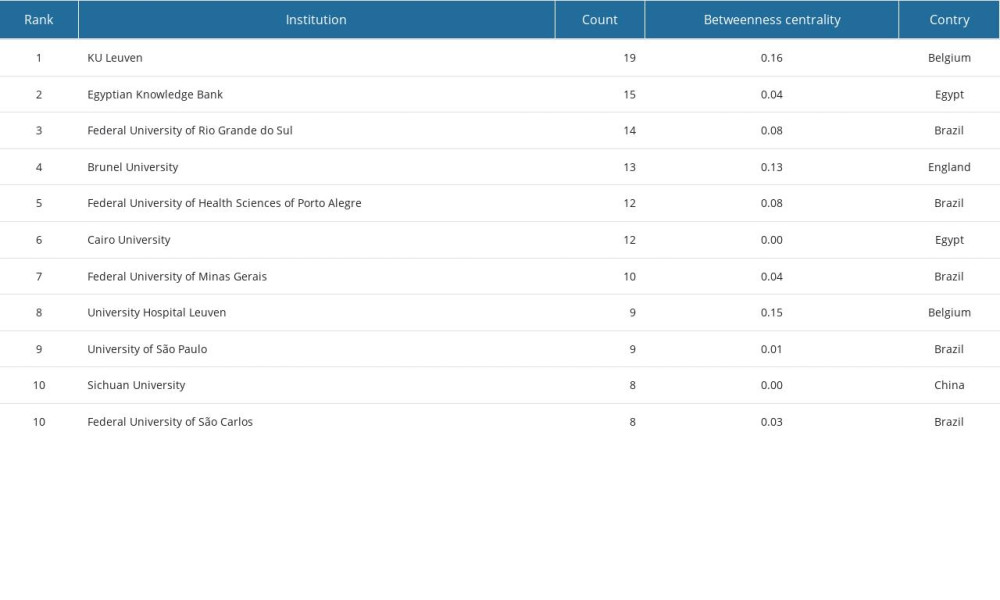 Table 3. Top 10 journals ranked by co-cited frequency on IMT publications. The data were derived from analysis using CiteSpace 6.2.R2, of the 504 publications retrieved on April 3, 2023.
Table 3. Top 10 journals ranked by co-cited frequency on IMT publications. The data were derived from analysis using CiteSpace 6.2.R2, of the 504 publications retrieved on April 3, 2023.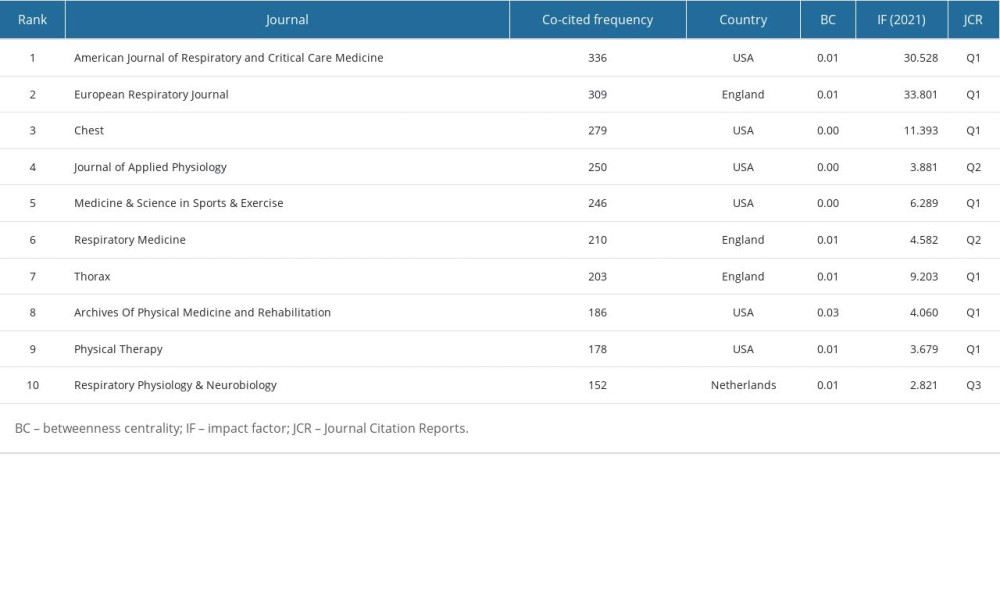 Table 4. Top 10 references ranked by co-cited frequency on IMT. The data were derived from analysis using CiteSpace 6.2.R2, of the 504 publications retrieved on April 3, 2023.
Table 4. Top 10 references ranked by co-cited frequency on IMT. The data were derived from analysis using CiteSpace 6.2.R2, of the 504 publications retrieved on April 3, 2023.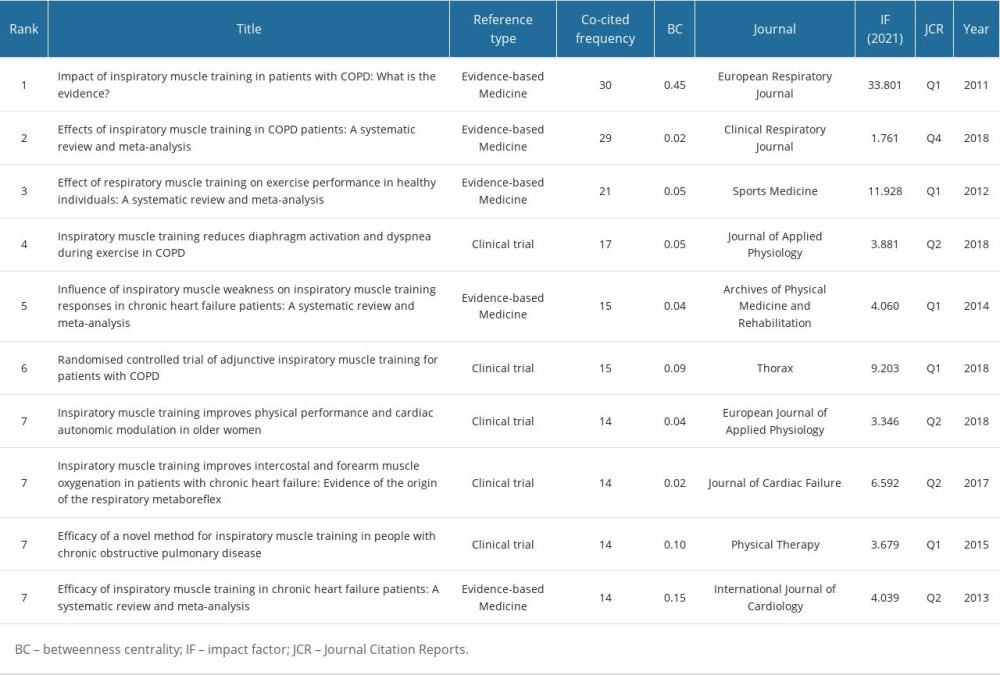 Table 5. Top 9 authors by publications. The ranking was based on the number of publications published by the authors. The data were derived from analysis using CiteSpace 6.2.R2, of the 504 publications retrieved on April 3, 2023.
Table 5. Top 9 authors by publications. The ranking was based on the number of publications published by the authors. The data were derived from analysis using CiteSpace 6.2.R2, of the 504 publications retrieved on April 3, 2023.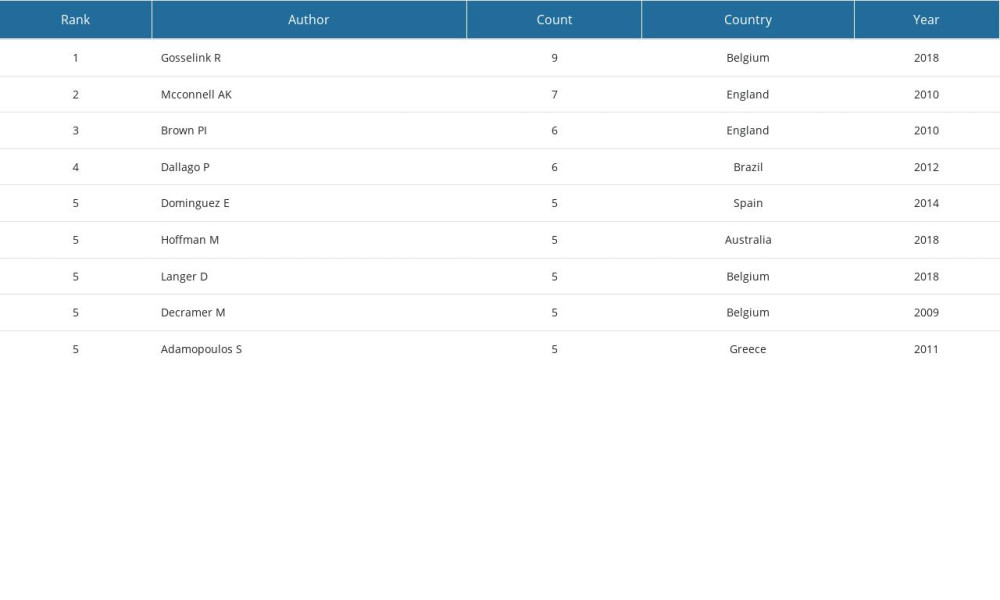 Table 6. Top 8 authors ranked by co-cited frequency on IMT publications. The data were derived from analysis using CiteSpace 6.2.R2, of the 504 publications retrieved on April 3, 2023.
Table 6. Top 8 authors ranked by co-cited frequency on IMT publications. The data were derived from analysis using CiteSpace 6.2.R2, of the 504 publications retrieved on April 3, 2023.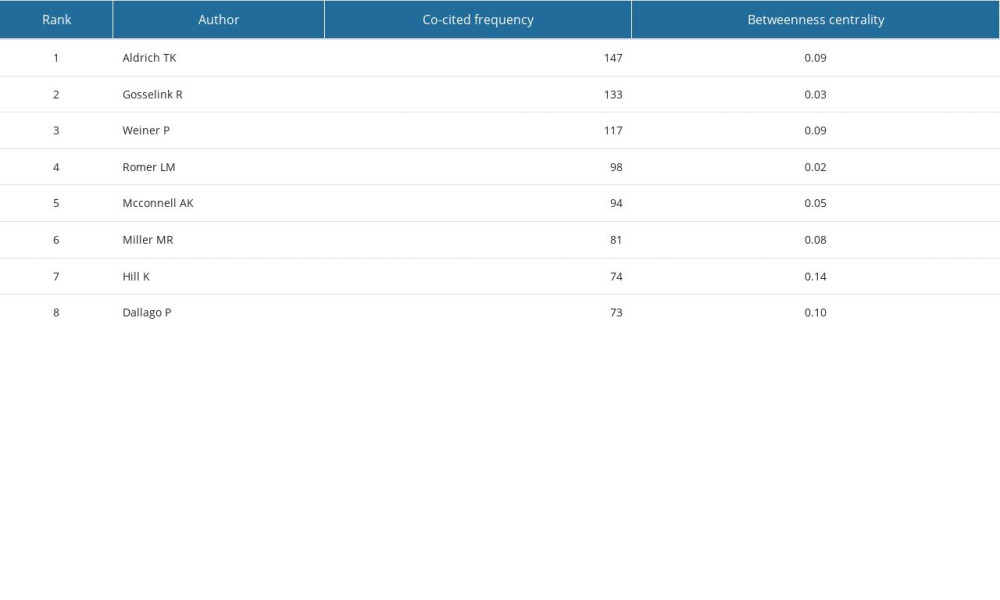 Table 7. Top 10 keywords co-occurrence frequency. The data were derived from analysis using CiteSpace 6.2.R2, of the 504 publications retrieved on April 3, 2023.
Table 7. Top 10 keywords co-occurrence frequency. The data were derived from analysis using CiteSpace 6.2.R2, of the 504 publications retrieved on April 3, 2023.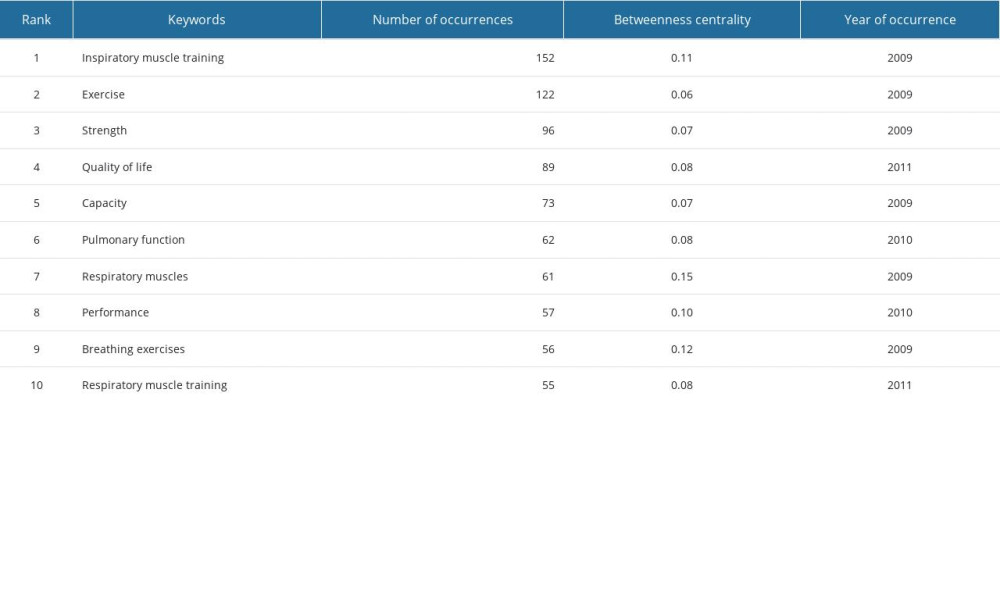 Table 8. List of keyword clusters. The data were derived from analysis using CiteSpace 6.2.R2, of the 504 publications retrieved on April 3, 2023.
Table 8. List of keyword clusters. The data were derived from analysis using CiteSpace 6.2.R2, of the 504 publications retrieved on April 3, 2023.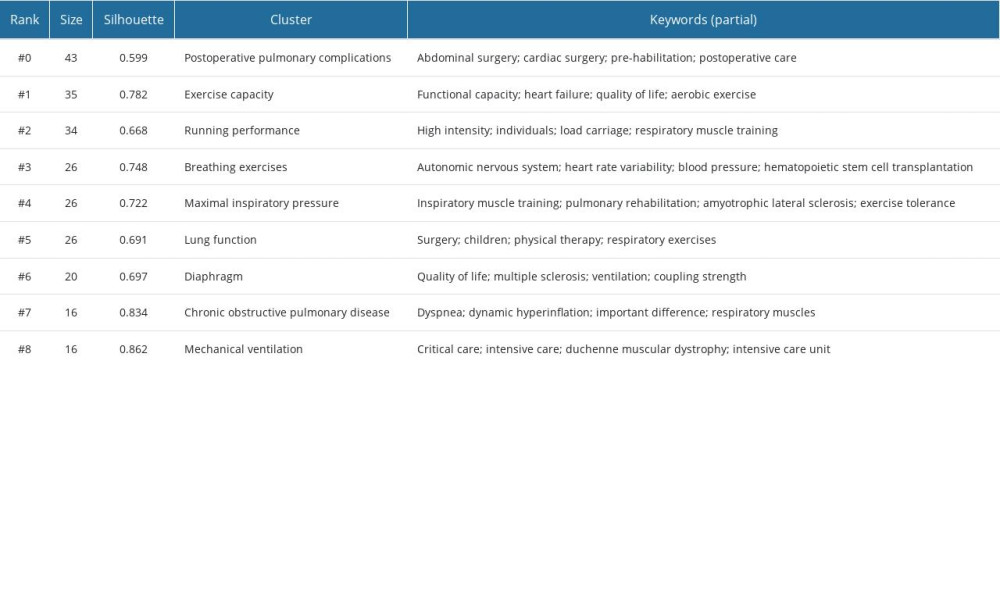
References
1. Leith DE, Bradley M, Ventilatory muscle strength and endurance training: J Appl Physiol, 1976; 41(4); 508-16
2. Shei RJ, Paris HL, Sogard AS, Mickleborough TD, Time to move beyond a “one-size fits all” approach to inspiratory muscle training: Front Physiol, 2021; 12; 766346
3. Palau P, Dominguez E, Gonzalez C, Effect of a home-based inspiratory muscle training programme on functional capacity in postdischarged patients with long COVID: The InsCOVID trial: BMJ Open Respir Res, 2022; 9(1); e001439
4. Ge X, Wang W, Hou L, Yang K, Fa X, Inspiratory muscle training is associated with decreased postoperative pulmonary complications: Evidence from randomized trials: J Thorac Cardiovasc Surg, 2018; 156(3); 1290-300e5
5. Huang YT, Lin YJ, Hung CH, The fully engaged inspiratory muscle training reduces postoperative pulmonary complications rate and increased respiratory muscle function in patients with upper abdominal surgery: A randomized controlled trial: Ann Med, 2022; 54(1); 2222-32
6. Tikunov B, Levine S, Mancini D, Chronic congestive heart failure elicits adaptations of endurance exercise in diaphragmatic muscle: Circulation, 1997; 95(4); 910-16
7. Sheel AW, Respiratory muscle training in healthy individuals: Physiological rationale and implications for exercise performance: Sports Med, 2002; 32(9); 567-81
8. Moreno AM, Toledo-Arruda AC, Lima JS, Inspiratory muscle training improves intercostal and forearm muscle oxygenation in patients with chronic heart failure: Evidence of the origin of the respiratory metaboreflex: J Card Fail, 2017; 23(9); 672-79
9. Chiappa GR, Roseguini BT, Vieira PJ, Inspiratory muscle training improves blood flow to resting and exercising limbs in patients with chronic heart failure: J Am Coll Cardiol, 2008; 51(17); 1663-71
10. Dall’Ago P, Chiappa GR, Guths H, Inspiratory muscle training in patients with heart failure and inspiratory muscle weakness: A randomized trial: J Am Coll Cardiol, 2006; 47(4); 757-63
11. McDonagh TA, Metra M, Adamo M, 2021 ESC Guidelines for the diagnosis and treatment of acute and chronic heart failure: Eur Heart J, 2021; 42(36); 3599-726
12. Bozkurt B, Fonarow GC, Goldberg LR, Cardiac rehabilitation for patients with heart failure: JACC Expert Panel: J Am Coll Cardiol, 2021; 77(11); 1454-69
13. Rodrigues GD, Dal Lago P, da Silva Soares PP, Time-dependent effects of inspiratory muscle training and detraining on cardiac autonomic control in older women: Exp Gerontol, 2021; 150; 111357
14. Riganas C, Papadopoulou Z, Margaritelis NV, Inspiratory muscle training effects on oxygen saturation and performance in hypoxemic rowers: Effect of sex: J Sports Sci, 2019; 37(22); 2513-21
15. Bissett B, Leditschke IA, Green M, Inspiratory muscle training for intensive care patients: A multidisciplinary practical guide for clinicians: Australian Critical Care, 2019; 32(3); 249-55
16. Ammous O, Feki W, Lotfi T, Inspiratory muscle training, with or without concomitant pulmonary rehabilitation, for chronic obstructive pulmonary disease (COPD): Cochrane Database Syst Rev, 2023; 1(1); CD013778
17. Fabero-Garrido R, Del Corral T, Angulo-Diaz-Parreno S, Respiratory muscle training improves exercise tolerance and respiratory muscle function/structure post-stroke at short term: A systematic review and meta-analysis: Ann Phys Rehabil Med, 2022; 65(5); 101596
18. Li H, Tao L, Huang Y, Inspiratory muscle training in patients with heart failure: A systematic review and meta-analysis: Front Cardiovasc Med, 2022; 9; 993846
19. West CR, Taylor BJ, Campbell IG, Romer LM, Effects of inspiratory muscle training on exercise responses in Paralympic athletes with cervical spinal cord injury: Scand J Med Sci Sports, 2014; 24(5); 764-72
20. de Oliveira Vacchi C, Martha BA, Macagnan FE, Effect of inspiratory muscle training associated or not to physical rehabilitation in preoperative anatomic pulmonary resection: A systematic review and meta-analysis: Support Care Cancer, 2022; 30(2); 1079-92
21. Hegazy FA, Mohamed Kamel SM, Effect of postoperative high load long duration inspiratory muscle training on pulmonary function and functional capacity after mitral valve replacement surgery: A randomized controlled trial with follow-up: PLoS One, 2021; 16(8); e0256609
22. Poletti V, Capozzolo A, Respiratory rehabilitation in the COVID-19 era: Respiration, 2020; 99(6); 461-62
23. Rochester CL, Spruit MA, Holland AE, Pulmonary rehabilitation in 2021: JAMA, 2021; 326(10); 969-70
24. Yang L, Fang X, Zhu J, Knowledge mapping analysis of public health emergency management research based on Web of Science: Front Public Health, 2022; 10; 755201
25. Synnestvedt MB, Chen C, Holmes JH, CiteSpace II: Visualization and knowledge discovery in bibliographic databases: AMIA Annu Symp Proc, 2005; 2005; 724-28
26. Chen C, Searching for intellectual turning points: Progressive knowledge domain visualization: Proc Natl Acad Sci USA, 2004; 101(Suppl 1); 5303-10
27. Yuan G, Shi J, Jia Q, Cardiac rehabilitation: A bibliometric review from 2001 to 2020: Front Cardiovasc Med, 2021; 8; 672913
28. Liu H, Liu F, Ji H, A bibliometric analysis of high-intensity interval training in cardiac rehabilitation: Int J Environ Res Public Health, 2022; 19(21); 13745
29. Falagas ME, Pitsouni EI, Malietzis GA, Pappas G, Comparison of PubMed, Scopus, Web of Science, and Google Scholar: Strengths and weaknesses: FASEB J, 2008; 22(2); 338-42
30. Chen C, Dubin R, Kim MC, Emerging trends and new developments in regenerative medicine: A scientometric update (2000–2014): Expert Opin Biol Ther, 2014; 14(9); 1295-317
31. Synnestvedt MB, Chen C, Holmes JH, Visual exploration of landmarks and trends in the medical informatics literature: AMIA Annu Symp Proc, 2005; 2005; 1129
32. Lee J, Lee Y, Oh SM, Kahng B, Betweenness centrality of teams in social networks: Chaos, 2021; 31(6); 061108
33. Chen C, Hu Z, Liu S, Tseng H, Emerging trends in regenerative medicine: A scientometric analysis in CiteSpace: Expert Opin Biol Ther, 2012; 12(5); 593-608
34. Trujillo CM, Long TM, Document co-citation analysis to enhance transdisciplinary research: Sci Adv, 2018; 4(1); e1701130
35. Smart NA, Giallauria F, Dieberg G, Efficacy of inspiratory muscle training in chronic heart failure patients: A systematic review and meta-analysis: Int J Cardiol, 2013; 167(4); 1502-7
36. Sathian B, Asim M, Banerjee I, Impact of COVID-19 on clinical trials and clinical research: A systematic review: Nepal J Epidemiol, 2020; 10(3); 878-87
37. Batalik L, Filakova K, Sladeckova M, The cost-effectiveness of exercise-based cardiac telerehabilitation intervention: A systematic review: Eur J Phys Rehabil Med, 2023; 59(2); 248-58
38. Taylor RS, Dalal HM, McDonagh STJ, The role of cardiac rehabilitation in improving cardiovascular outcomes: Nat Rev Cardiol, 2022; 19(3); 180-94
39. Dobkin BH, A rehabilitation-internet-of-things in the home to augment motor skills and exercise training: Neurorehabil Neural Repair, 2017; 31(3); 217-27
40. Szekely Y, Lichter Y, Sadon S, Cardiorespiratory abnormalities in patients recovering from coronavirus disease 2019: J Am Soc Echocardiogr, 2021; 34(12); 1273-84e9
41. Puchner B, Sahanic S, Kirchmair R, Beneficial effects of multi-disciplinary rehabilitation in postacute COVID-19: An observational cohort study: Eur J Phys Rehabil Med, 2021; 57(2); 189-98
42. Del Corral T, Fabero-Garrido R, Plaza-Manzano G, Minimal clinically important differences in inspiratory muscle function variables after a respiratory muscle training programme in individuals with long-term post-COVID-19 symptoms: J Clin Med, 2023; 12(7); 2720
43. McNarry MA, Berg RMG, Shelley J, Inspiratory muscle training enhances recovery post-COVID-19: A randomised controlled trial: Eur Respir J, 2022; 60(4); 2103101
44. Leal LF, Cousin E, Bidinotto AB, Epidemiology and burden of chronic respiratory diseases in Brazil from 1990 to 2017: Analysis for the Global Burden of Disease 2017 Study: Rev Bras Epidemiol, 2020; 23; e200031
45. Cruz AA, Camargos PA, Urrutia-Pereira M, Stelmach R, Global alliance against chronic respiratory diseases (GARD) Brazil success case: Overcoming barriers: J Thorac Dis, 2018; 10(1); 534-38
46. Sao Jose BP, Bateman E, Botelho CMA, Practical approach lung health-global alliance against chronic respiratory diseases (PAL-GARD) initiative in Brazil: J Thorac Dis, 2022; 14(7); 2689-97
47. Aldrich TK: Web of Science core collectionrid lensbeamplots/red circle outline copy 6back buttonfilter button Available from:https://www.webofscience.com/wos/author/record/4066328
48. Gosselink R: Web of Science core collectionrid lensbeamplots/red circle outline copy 6back buttonfilter button Available from:https://www.webofscience.com/wos/author/record/1981592
49. : Rik gosselink | professor (full) | phd, pt | ku leuven, leuven | ku leuven | faculty of movement and rehabilitation science (faber) | research profile Available fromhttps://www.researchgate.net/profile/Rik-Gosselink
50. Jiang F, Su Y, Chang T, Knowledge mapping of global trends for myasthenia gravis development: A bibliometrics analysis: Front Immunol, 2023; 14; 1132201
51. Anzueto A, Miravitlles M, Pathophysiology of dyspnea in COPD: Postgrad Med, 2017; 129(3); 366-74
52. Tortola-Navarro A, Gallardo-Gomez D, Alvarez-Barbosa F, Salazar-Martinez E, Cancer survivor inspiratory muscle training: Systematic review and Bayesian meta-analysis: BMJ Support Palliat Care, 2022 [Online ahead of print]
53. Smith SMS, Chaudhary K, Blackstock F, Concordant evidence-based interventions in cardiac and pulmonary rehabilitation guidelines: J Cardiopulm Rehabil Prev, 2019; 39(1); 9-18
54. Cui N, Yan X, Zhang Y, Non-pharmacological interventions for minimizing physical restraints use in intensive care units: An umbrella review: Front Med (Lausanne), 2022; 9; 806945
55. Kehlet H, Multimodal approach to control postoperative pathophysiology and rehabilitation: Br J Anaesth, 1997; 78(5); 606-17
56. Katsura M, Kuriyama A, Takeshima T, Preoperative inspiratory muscle training for postoperative pulmonary complications in adults undergoing cardiac and major abdominal surgery: Cochrane Database Syst Rev, 2015; 2015(10); CD010356
57. American Thoracic Society/European Respiratory Society, ATS/ERS Statement on respiratory muscle testing: Am J Respir Crit Care Med, 2002; 166(4); 518-624
58. Hamazaki N, Kamiya K, Matsuzawa R, Prevalence and prognosis of respiratory muscle weakness in heart failure patients with preserved ejection fraction: Respir Med, 2020; 161; 105834
59. Dres M, Goligher EC, Heunks LMA, Brochard LJ, Critical illness-associated diaphragm weakness: Intensive Care Med, 2017; 43(10); 1441-52
60. Smith JR, Taylor BJ, Inspiratory muscle weakness in cardiovascular diseases: Implications for cardiac rehabilitation: Prog Cardiovasc Dis, 2022; 70; 49-57
Figures
 Figure 1. Database search flow chart. (Software: WPS Office 2023, Kingsoft, China).
Figure 1. Database search flow chart. (Software: WPS Office 2023, Kingsoft, China). Figure 2. Annual number of publications about IMT. Microsoft Excel 2019 software was used for graphing the annual circulation of publications. (Software: Microsoft Excel 2019, Microsoft, USA).
Figure 2. Annual number of publications about IMT. Microsoft Excel 2019 software was used for graphing the annual circulation of publications. (Software: Microsoft Excel 2019, Microsoft, USA). Figure 3. Country collaborative network analysis. Time slicing: January 2009 to September 2022, Slice length: 1 year, Node types: Country, Top N=50, Pruning: Pathfinder and Pruning the merged network, N=48, E=99. Above the picture is the timeline with color (2009–2022). The size of a node is positively correlated with the number of the publications. A node with BC ≥0.1 is displayed with a purple ring. Connecting lines represent collaborative relationships. (Software: CiteSpace 6.2.R2, Drexel University, Philadelphia, USA).
Figure 3. Country collaborative network analysis. Time slicing: January 2009 to September 2022, Slice length: 1 year, Node types: Country, Top N=50, Pruning: Pathfinder and Pruning the merged network, N=48, E=99. Above the picture is the timeline with color (2009–2022). The size of a node is positively correlated with the number of the publications. A node with BC ≥0.1 is displayed with a purple ring. Connecting lines represent collaborative relationships. (Software: CiteSpace 6.2.R2, Drexel University, Philadelphia, USA). Figure 4. Institution collaborative network analysis. Time slicing: January 2009 to September 2022, Slice length: 1 year, Node types: Institution, Top N=50, Pruning: Pathfinder and Pruning the merged network, N=295, E=387. Above the picture is the timeline with color (2009–2022). The circles in the picture indicate the volume of articles issued, with larger circles indicating more articles issued by the institution, and the connecting lines indicating the existence of a collaborative or co-occurring relationship. A node with BC ≥0.1 is displayed with a purple ring. (Software: CiteSpace 6.2.R2, Drexel University, Philadelphia, USA).
Figure 4. Institution collaborative network analysis. Time slicing: January 2009 to September 2022, Slice length: 1 year, Node types: Institution, Top N=50, Pruning: Pathfinder and Pruning the merged network, N=295, E=387. Above the picture is the timeline with color (2009–2022). The circles in the picture indicate the volume of articles issued, with larger circles indicating more articles issued by the institution, and the connecting lines indicating the existence of a collaborative or co-occurring relationship. A node with BC ≥0.1 is displayed with a purple ring. (Software: CiteSpace 6.2.R2, Drexel University, Philadelphia, USA). Figure 5. Author co-cited analysis. Lines between 2 nodes represent the co-citation relationship of authors, and the thickness of a line represents the strength of the relationship. (Software: CiteSpace 6.2.R2, Drexel University, Philadelphia, USA).
Figure 5. Author co-cited analysis. Lines between 2 nodes represent the co-citation relationship of authors, and the thickness of a line represents the strength of the relationship. (Software: CiteSpace 6.2.R2, Drexel University, Philadelphia, USA). Figure 6. Keyword co-occurrence knowledge map. Institution collaborative network analysis. Time slicing: January 2009 to September 2022, Slice length: 1 year, Node types: Institution, Top N=50, Pruning: Pathfinder and Pruning the merged network, N=343, E=1154. Above the picture is the timeline with color (2009–2022). Lines between two nodes represent the co-occurrence relationship of keywords, and the thickness of a line represents the strength of the relationship. A node with BC ≥0.1 is displayed with a purple ring. (Software: CiteSpace 6.2.R2, Drexel University, Philadelphia, USA).
Figure 6. Keyword co-occurrence knowledge map. Institution collaborative network analysis. Time slicing: January 2009 to September 2022, Slice length: 1 year, Node types: Institution, Top N=50, Pruning: Pathfinder and Pruning the merged network, N=343, E=1154. Above the picture is the timeline with color (2009–2022). Lines between two nodes represent the co-occurrence relationship of keywords, and the thickness of a line represents the strength of the relationship. A node with BC ≥0.1 is displayed with a purple ring. (Software: CiteSpace 6.2.R2, Drexel University, Philadelphia, USA). Figure 7. Keyword clustering and visual time-zone mapping. Dark to light colors represent years from far to near, and connecting lines represent links between keywords. When performing cluster analysis, Modularity value should be >0.3, otherwise the cluster is meaningless; if the Mean Silhouette (the contour value), which indicates the homogeneity of the clustering profile, is closer to 1, it means the clustering is more efficient. (Software: CiteSpace 6.2.R2, Drexel University, Philadelphia, USA).
Figure 7. Keyword clustering and visual time-zone mapping. Dark to light colors represent years from far to near, and connecting lines represent links between keywords. When performing cluster analysis, Modularity value should be >0.3, otherwise the cluster is meaningless; if the Mean Silhouette (the contour value), which indicates the homogeneity of the clustering profile, is closer to 1, it means the clustering is more efficient. (Software: CiteSpace 6.2.R2, Drexel University, Philadelphia, USA). Figure 8. Top 25 keyword bursts. The keyword burst analysis indicates that keywords appear suddenly with higher frequencies at a certain period in this domain, and red areas indicate the length of time that a keyword has lasted since its sudden appearance. (Software: CiteSpace 6.2.R2, Drexel University, Philadelphia, USA).
Figure 8. Top 25 keyword bursts. The keyword burst analysis indicates that keywords appear suddenly with higher frequencies at a certain period in this domain, and red areas indicate the length of time that a keyword has lasted since its sudden appearance. (Software: CiteSpace 6.2.R2, Drexel University, Philadelphia, USA). Tables
 Table 1. Top 10 countries by publications. The ranking was based on the number of publications. The data were derived from analysis using CiteSpace 6.2.R2, of the 504 publications retrieved on April 3, 2023.
Table 1. Top 10 countries by publications. The ranking was based on the number of publications. The data were derived from analysis using CiteSpace 6.2.R2, of the 504 publications retrieved on April 3, 2023. Table 2. Top 10 institutions by publications. The ranking was based on the number of publications. The data were derived from analysis using CiteSpace 6.2.R2, of the 504 publications retrieved on April 3, 2023.
Table 2. Top 10 institutions by publications. The ranking was based on the number of publications. The data were derived from analysis using CiteSpace 6.2.R2, of the 504 publications retrieved on April 3, 2023. Table 3. Top 10 journals ranked by co-cited frequency on IMT publications. The data were derived from analysis using CiteSpace 6.2.R2, of the 504 publications retrieved on April 3, 2023.
Table 3. Top 10 journals ranked by co-cited frequency on IMT publications. The data were derived from analysis using CiteSpace 6.2.R2, of the 504 publications retrieved on April 3, 2023. Table 4. Top 10 references ranked by co-cited frequency on IMT. The data were derived from analysis using CiteSpace 6.2.R2, of the 504 publications retrieved on April 3, 2023.
Table 4. Top 10 references ranked by co-cited frequency on IMT. The data were derived from analysis using CiteSpace 6.2.R2, of the 504 publications retrieved on April 3, 2023. Table 5. Top 9 authors by publications. The ranking was based on the number of publications published by the authors. The data were derived from analysis using CiteSpace 6.2.R2, of the 504 publications retrieved on April 3, 2023.
Table 5. Top 9 authors by publications. The ranking was based on the number of publications published by the authors. The data were derived from analysis using CiteSpace 6.2.R2, of the 504 publications retrieved on April 3, 2023. Table 6. Top 8 authors ranked by co-cited frequency on IMT publications. The data were derived from analysis using CiteSpace 6.2.R2, of the 504 publications retrieved on April 3, 2023.
Table 6. Top 8 authors ranked by co-cited frequency on IMT publications. The data were derived from analysis using CiteSpace 6.2.R2, of the 504 publications retrieved on April 3, 2023. Table 7. Top 10 keywords co-occurrence frequency. The data were derived from analysis using CiteSpace 6.2.R2, of the 504 publications retrieved on April 3, 2023.
Table 7. Top 10 keywords co-occurrence frequency. The data were derived from analysis using CiteSpace 6.2.R2, of the 504 publications retrieved on April 3, 2023. Table 8. List of keyword clusters. The data were derived from analysis using CiteSpace 6.2.R2, of the 504 publications retrieved on April 3, 2023.
Table 8. List of keyword clusters. The data were derived from analysis using CiteSpace 6.2.R2, of the 504 publications retrieved on April 3, 2023. Table 1. Top 10 countries by publications. The ranking was based on the number of publications. The data were derived from analysis using CiteSpace 6.2.R2, of the 504 publications retrieved on April 3, 2023.
Table 1. Top 10 countries by publications. The ranking was based on the number of publications. The data were derived from analysis using CiteSpace 6.2.R2, of the 504 publications retrieved on April 3, 2023. Table 2. Top 10 institutions by publications. The ranking was based on the number of publications. The data were derived from analysis using CiteSpace 6.2.R2, of the 504 publications retrieved on April 3, 2023.
Table 2. Top 10 institutions by publications. The ranking was based on the number of publications. The data were derived from analysis using CiteSpace 6.2.R2, of the 504 publications retrieved on April 3, 2023. Table 3. Top 10 journals ranked by co-cited frequency on IMT publications. The data were derived from analysis using CiteSpace 6.2.R2, of the 504 publications retrieved on April 3, 2023.
Table 3. Top 10 journals ranked by co-cited frequency on IMT publications. The data were derived from analysis using CiteSpace 6.2.R2, of the 504 publications retrieved on April 3, 2023. Table 4. Top 10 references ranked by co-cited frequency on IMT. The data were derived from analysis using CiteSpace 6.2.R2, of the 504 publications retrieved on April 3, 2023.
Table 4. Top 10 references ranked by co-cited frequency on IMT. The data were derived from analysis using CiteSpace 6.2.R2, of the 504 publications retrieved on April 3, 2023. Table 5. Top 9 authors by publications. The ranking was based on the number of publications published by the authors. The data were derived from analysis using CiteSpace 6.2.R2, of the 504 publications retrieved on April 3, 2023.
Table 5. Top 9 authors by publications. The ranking was based on the number of publications published by the authors. The data were derived from analysis using CiteSpace 6.2.R2, of the 504 publications retrieved on April 3, 2023. Table 6. Top 8 authors ranked by co-cited frequency on IMT publications. The data were derived from analysis using CiteSpace 6.2.R2, of the 504 publications retrieved on April 3, 2023.
Table 6. Top 8 authors ranked by co-cited frequency on IMT publications. The data were derived from analysis using CiteSpace 6.2.R2, of the 504 publications retrieved on April 3, 2023. Table 7. Top 10 keywords co-occurrence frequency. The data were derived from analysis using CiteSpace 6.2.R2, of the 504 publications retrieved on April 3, 2023.
Table 7. Top 10 keywords co-occurrence frequency. The data were derived from analysis using CiteSpace 6.2.R2, of the 504 publications retrieved on April 3, 2023. Table 8. List of keyword clusters. The data were derived from analysis using CiteSpace 6.2.R2, of the 504 publications retrieved on April 3, 2023.
Table 8. List of keyword clusters. The data were derived from analysis using CiteSpace 6.2.R2, of the 504 publications retrieved on April 3, 2023. In Press
08 Mar 2024 : Animal Research
Modification of Experimental Model of Necrotizing Enterocolitis (NEC) in Rat Pups by Single Exposure to Hyp...Med Sci Monit In Press; DOI: 10.12659/MSM.943443
18 Apr 2024 : Clinical Research
Comparative Analysis of Open and Closed Sphincterotomy for the Treatment of Chronic Anal Fissure: Safety an...Med Sci Monit In Press; DOI: 10.12659/MSM.944127
08 Mar 2024 : Laboratory Research
Evaluation of Retentive Strength of 50 Endodontically-Treated Single-Rooted Mandibular Second Premolars Res...Med Sci Monit In Press; DOI: 10.12659/MSM.944110
11 Mar 2024 : Clinical Research
Comparison of Effects of Sugammadex and Neostigmine on Postoperative Neuromuscular Blockade Recovery in Pat...Med Sci Monit In Press; DOI: 10.12659/MSM.942773
Most Viewed Current Articles
17 Jan 2024 : Review article
Vaccination Guidelines for Pregnant Women: Addressing COVID-19 and the Omicron VariantDOI :10.12659/MSM.942799
Med Sci Monit 2024; 30:e942799
14 Dec 2022 : Clinical Research
Prevalence and Variability of Allergen-Specific Immunoglobulin E in Patients with Elevated Tryptase LevelsDOI :10.12659/MSM.937990
Med Sci Monit 2022; 28:e937990
16 May 2023 : Clinical Research
Electrophysiological Testing for an Auditory Processing Disorder and Reading Performance in 54 School Stude...DOI :10.12659/MSM.940387
Med Sci Monit 2023; 29:e940387
01 Jan 2022 : Editorial
Editorial: Current Status of Oral Antiviral Drug Treatments for SARS-CoV-2 Infection in Non-Hospitalized Pa...DOI :10.12659/MSM.935952
Med Sci Monit 2022; 28:e935952








